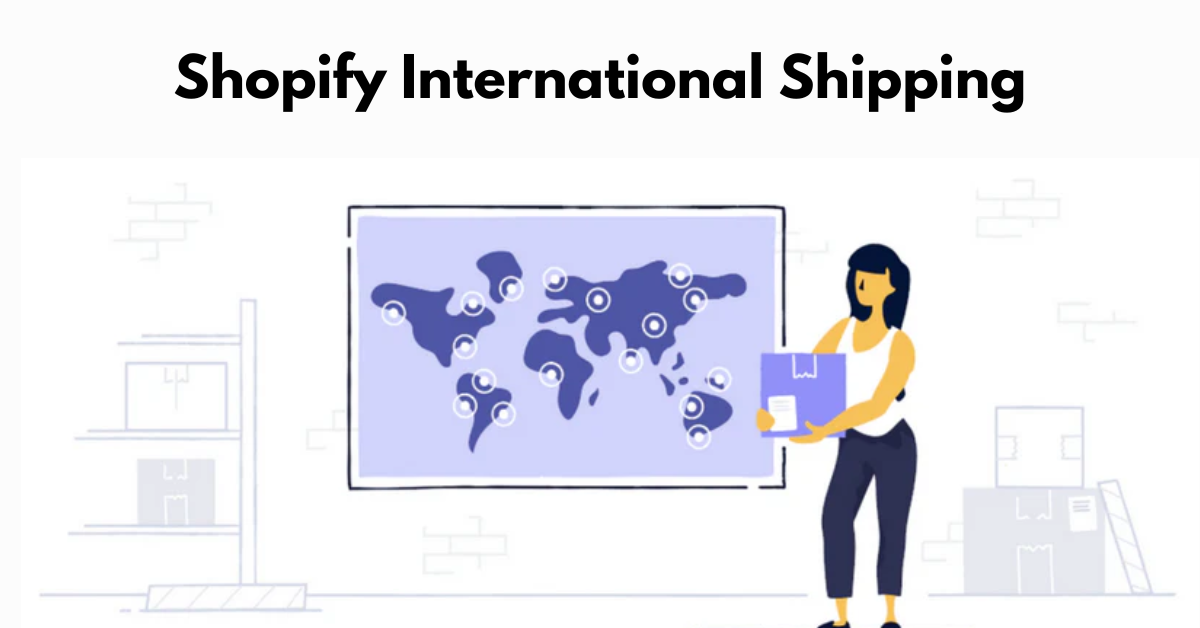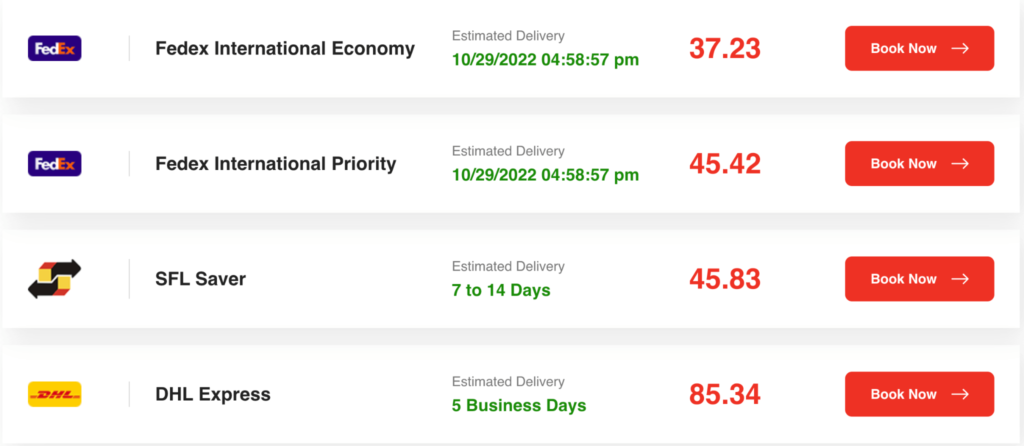Shopify International Shipping: Benefits & Setup Guide

Expanding your Shopify store to serve international customers is a strategic move that can significantly increase your market reach and sales. Offering international shipping can seem daunting, but the potential benefits of accessing a global audience are immense. In this blog, we'll explore the advantages of providing international shipping through Shopify and provide a step-by-step guide on how to set it up effectively. From understanding logistics to navigating customs and duties, this guide will equip you with the necessary knowledge to make your products available worldwide.
Benefits of Shopify International Shipping

Shopify worldwide shipping opens up a multitude of benefits, helping you expand your brand’s reach and grow your business. Here are five key advantages:
- Access to a Global Market: By enabling international shipping, you can sell your products to customers around the world. This significantly broadens your potential customer base beyond your local market, providing opportunities to increase sales and revenue.
- Enhanced Brand Visibility: Shipping internationally helps raise your brand's profile on a global stage. Customers in diverse markets get the chance to experience your products, which can lead to increased brand recognition and loyalty across different countries.
- Diversification of Revenue Streams: With international shipping, your business isn't solely dependent on the local economy. This diversification helps stabilize your revenue by tapping into multiple markets, each with its own peak sales periods and demand cycles.
- Competitive Advantage: Many local competitors may not offer international shipping. By providing this service, you can stand out from the crowd, attract a broader audience, and offer something unique that others may not.
- Customer Satisfaction and Retention: Providing a reliable international shipping option improves customer satisfaction by making your products available worldwide. Satisfied international customers are more likely to return and recommend your store to others, fostering customer loyalty and repeat business.
Things to Consider Before Getting Into Shopify International Shipping

When considering international shipping for your Shopify store, several key factors need to be evaluated to ensure a smooth expansion into global markets. Here's what you should consider:
- Regulations and Compliance: Different countries have various regulations regarding imported goods. Research and understand the import rules, taxes, duties, and customs laws of the countries you plan to ship to. Compliance with these regulations is crucial to avoid legal issues and shipment delays.
- Shipping Costs and Methods: International shipping costs can vary widely based on destination, weight, and delivery speed. Compare different carriers and shipping methods to find the most cost-effective and reliable options for your products and target markets.
- Packaging and Handling: Proper packaging is essential to ensure that items arrive in good condition. Consider the distance and handling involved in international shipments and choose packaging that protects the products effectively.
- Currency and Payment Methods: Offering local currency pricing can increase conversion rate. Ensure that your payment gateway supports multiple currencies and consider the preferred payment methods in different countries.
- Return Policies: Handling returns internationally can be complex and costly. Develop a clear return policy that is feasible for your business while being fair to international customers. Consider using a local return address or third-party services to manage returns more efficiently.
- Customer Service: Providing excellent customer service is vital, especially for international customers who may have concerns about order status, delivery times, or returns. Be prepared to handle inquiries in different time zones and possibly in different languages.
How Much Does It Cost to Ship Internationally?

The cost of international shipping varies widely depending on several factors including the destination, weight, dimensions of the package, and the shipping service used. Here’s a breakdown of what influences the cost:
- Destination: Shipping costs can differ drastically depending on the country or region to which the package is being sent. Different countries have different regulations, duties, and taxes which can affect the overall cost.
- Weight and Size: The weight and dimensions of the package play a crucial role in determining shipping costs. Heavier and larger packages typically cost more to ship. Most carriers use the dimensional weight to account for the size of the package in relation to its actual weight.
- Shipping Service: The type of shipping service chosen also impacts the cost. Options range from standard shipping, which is more cost-effective but slower, to expedited shipping services which are faster but more expensive.
- Customs, Duties, and Taxes: When shipping internationally, your package may be subject to customs duties and taxes imposed by the destination country. These fees are typically paid by the recipient and can vary widely depending on the country’s regulations.
- Insurance and Tracking: Adding insurance or tracking to your shipment increases the cost but provides security and monitoring for your package during transit.
How to set up international shipping on Shopify?
Setting up international shipping on Shopify involves several key steps to ensure you can effectively serve customers around the world. Here’s how you can configure your Shopify store for international shipping:
- Access Shipping Settings: Start by logging into your Shopify admin panel. Go to ‘Settings’ and then select ‘Shipping and delivery’ to access the shipping settings.
- Create Shipping Zones: You can add international regions or specific countries to your shipping zones. In your shipping settings, click on ‘Manage rates’ next to the profile you want to adjust. Here, you can add zones and select the countries or regions you wish to ship to.
- Set Shipping Rates: For each zone, you can set up different shipping rates. This can be based on fixed prices, weight, or the order’s value. Shopify also supports carrier-calculated shipping rates if you want to use real-time calculations from carriers like UPS, FedEx, or DHL.
- Consider Using a Third-Party Fulfillment Service: If managing international logistics seems overwhelming, consider integrating with third-party logistics providers who specialize in international shipping. They can handle the storage, packing, and shipping processes, which simplifies duties and taxes.
- Configure Customs Information: Dealing with customs is an integral part of international shipping. Ensure that your product descriptions are detailed, including the Harmonized System (HS) codes which are used worldwide to identify products and determine tariffs.
- Update Your Store Policies: Clearly communicate your international shipping policies on your website. This includes delivery time frames, shipping costs, return policies, and any other customer obligations like potential customs fees.
- Test Your Setup: Before going live, conduct tests to ensure that the international shipping options are displayed correctly at checkout and that the rates are calculated as intended.
Shopify International Shipping Rates
When setting up international shipping on Shopify, understanding the various shipping rates is crucial for both your profitability and customer satisfaction. Shipping rates can vary widely based on several factors including the destination country, package weight, and shipping speed.
1. Destination Country: Shipping costs differ from one country to another due to distance, local carrier fees, and the logistics infrastructure of the destination. It’s important to research and choose carriers that offer the best balance of cost and reliability for the countries you are targeting.
2. Package Weight and Dimensions: The weight and size of your products significantly affect shipping costs. Heavier and larger items generally cost more to ship internationally. Using packaging that adequately protects the product while being as light and compact as possible can help minimize shipping costs.
3. Shipping Speed: Offering different shipping speeds can affect customer choice and satisfaction. Expedited shipping options cost more due to the faster service level, while standard shipping offers a more cost-effective rate for customers willing to wait longer for their products.
4. Carrier Options: Shopify integrates with various carriers, each offering different rates and services. Popular carriers include DHL, UPS, and FedEx, alongside local postal services. It’s advisable to compare these carriers to find the best rates and services for your needs.
5. Customization and Discounts: Shopify allows you to set up customized shipping rates based on the factors above or use carrier-calculated shipping rates, which automatically adjust based on real-time data from carriers. Additionally, negotiating bulk shipping rates with carriers or using third-party insurance can reduce costs.
5 Best Shopify Apps for International Shipping
Expanding your Shopify store globally requires a robust international shipping solution. Here are five top Shopify apps that can help streamline your international shipping process, ensuring your products reach global customers efficiently and reliably:
- ShipStation: ShipStation is a popular choice for Shopify store owners looking to manage their shipping operations seamlessly. It supports a wide range of shipping carriers worldwide and offers features like automated order importing, customizable shipping labels, and bulk shipping. This app simplifies the logistics of shipping internationally by handling everything from rate comparison to tracking shipments.
- Easyship: Easyship provides access to a global network of shipping carriers, offering competitive rates for international shipping. The app gives transparent insights into taxes, duties, and courier fees, helping you manage costs effectively. Its dashboard allows you to automate shipping rules based on product type, destination, and other criteria, making international shipping hassle-free.
- Shippo: Shippo connects you with multiple carriers around the world, allowing you to compare rates and delivery times. It integrates smoothly with Shopify to automate the shipping process, provide tracking information to customers, and print labels in bulk. Shippo also handles return shipping, which is crucial for maintaining customer satisfaction on international orders.
- Aftership: Aftership enhances the post-purchase experience by providing detailed tracking and delivery updates to customers. It supports over 700 carriers globally and integrates with Shopify to send automatic status updates via email or SMS, reducing customer anxiety about order status.
- ShipBob: While primarily a fulfillment service, ShipBob also offers a direct Shopify integration. It manages warehousing and inventory across its global network of fulfillment centers, enabling fast and cost-effective international shipping. ShipBob calculates real-time shipping costs, provides tracking information, and ensures timely delivery of international orders.
FAQs
Here are the most frequently asked questions related to international shipping:
Does Shopify do international shipping?
Yes, Shopify supports international shipping. Store owners can set up their Shopify stores to sell and ship products to customers worldwide, using a variety of shipping options and carriers that integrate directly with Shopify's platform.

.png)
